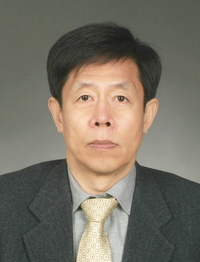Professor Min-Yang Yang of the Department of Mechanical Engineering, KAIST has developed a polymer Organic Light Emitting Diode (OLED) which can be manufactured easily in normal atmospheric conditions, as compared to in a vacuum chamber, that was necessary for previous OLEDs. The team made it possible for the production of most of the functional layers – Hole Injection Layer, Emission Layer, Electron Transfer Layer and Electron Injection Layer – in the form of liquids. The liquid substance can undergo solution processing – similar to printing techniques – which greatly reduces the cost of production.

In traditional OLEDs, the Electron Injection materials were made out of alkali and alkaline earth metals such as Lithium Fluoride, Cesium Fluoride and Cesium Carbonate. These materials lowered the electron injection barrier that the electron must overcome between the cathode and the emission layer, which increased the luminous efficiency.
However, the materials were unstable at normal atmospheric conditions and could only be pasted onto layers by vacuum evaporation, which made it difficult for application to layers requiring ultrathin layers the size of one nanometer with big sizes. Also, the efficiency of the device underneath the layer was greatly affected by the process, which was an obstacle for solution processing in all the layers.
Professor Yang proposed a multi-structure containing both the electron transfer layer and the electron injection layer which could be manufactured from solution processing with zinc-oxide nanoparticles five nanometers in size and ammonium ion solutions. The solution doesn’t contain any alkali or alkaline earth metals, making them stable in normal atmospheric conditions and enabling solution processing without the need for vacuum chambers.
When certain levels of electric fields are applied, the ammonium ions present between the nanoparticle and ammonium ion multi-layer align themselves to the electric field, creating an interface dipole. Using the technique, the team achieved luminous efficiency of 10 candelas per amphere and luminance of 50,000 candelas per square meter without using alkali and alkaline earth metals.
The research, led by Professor Yang and Ph.D. student Hong-Seok Yoon, was published in the December online issue of Applied Physics Letters. The domestic and international patent applications have been completed.

